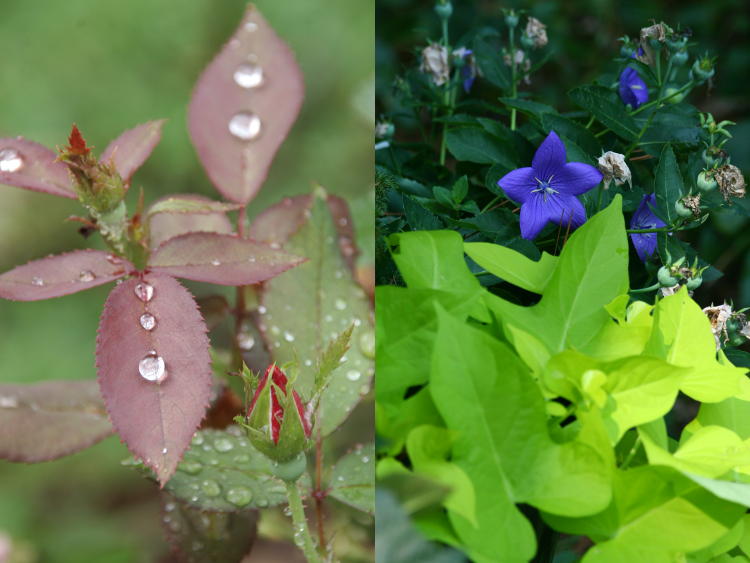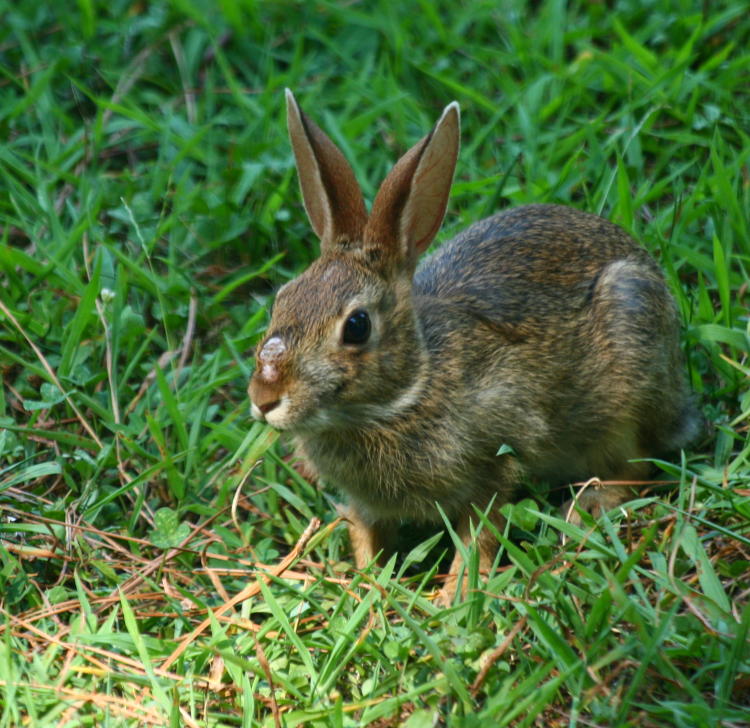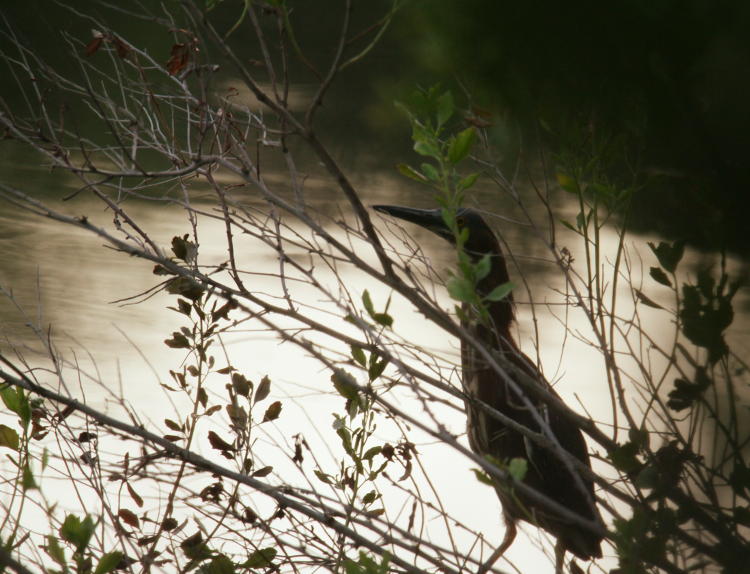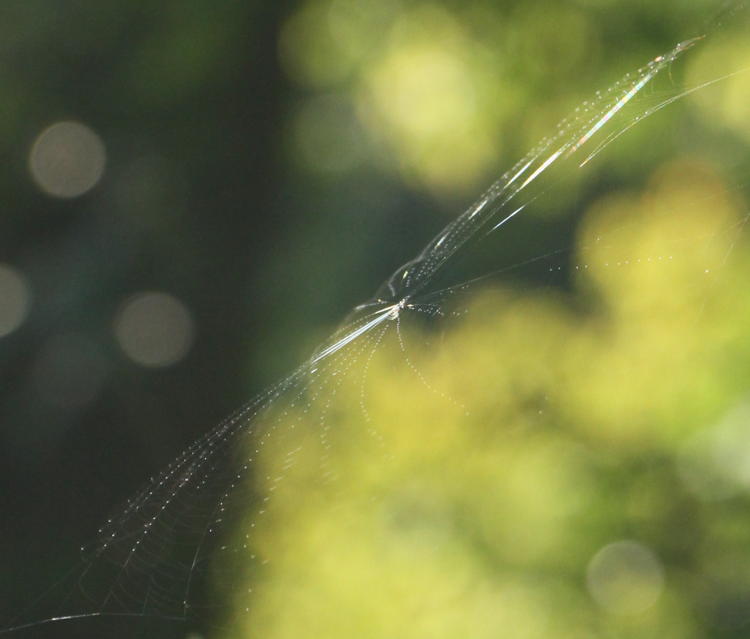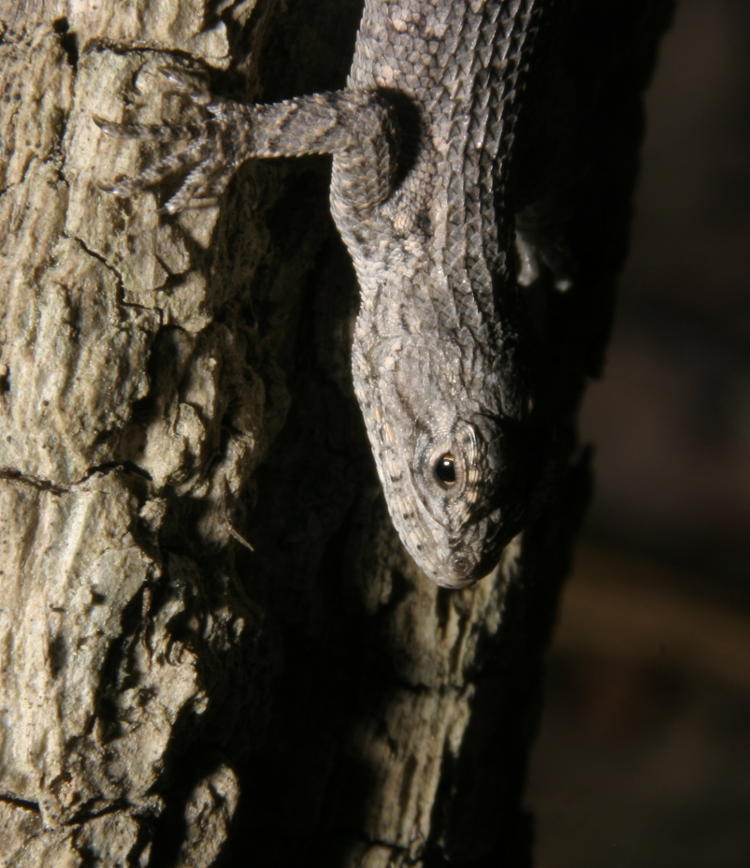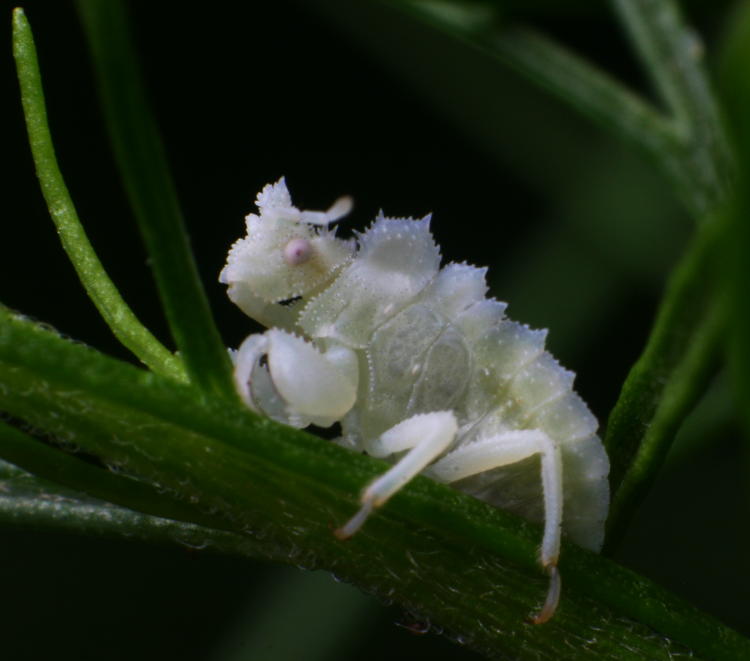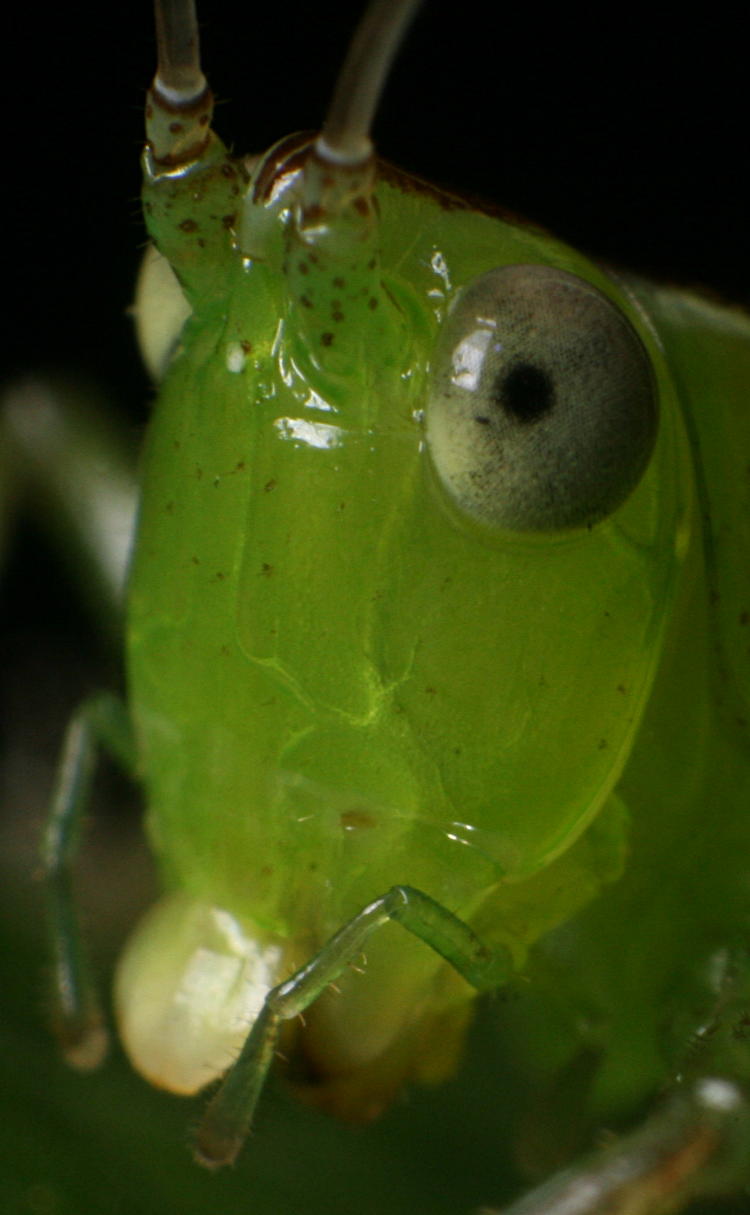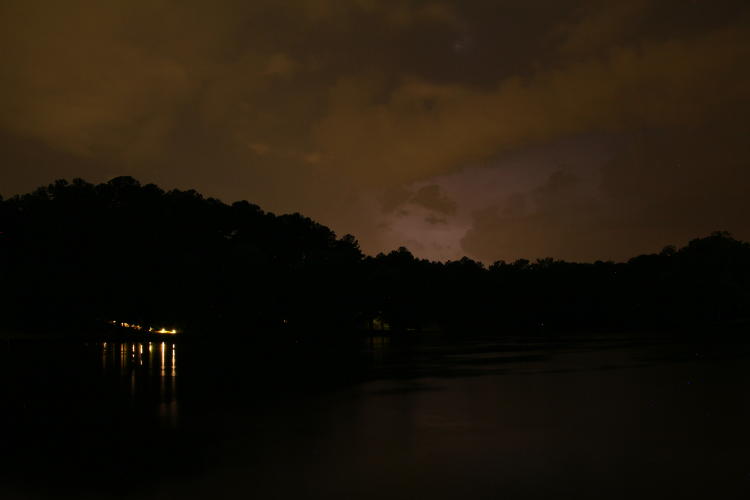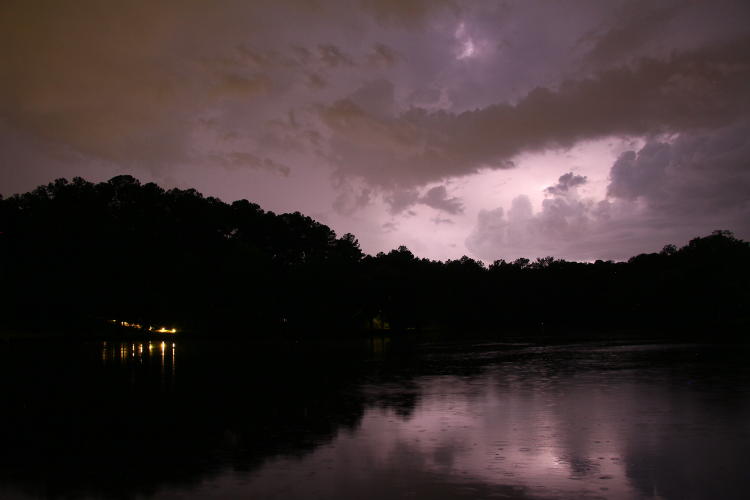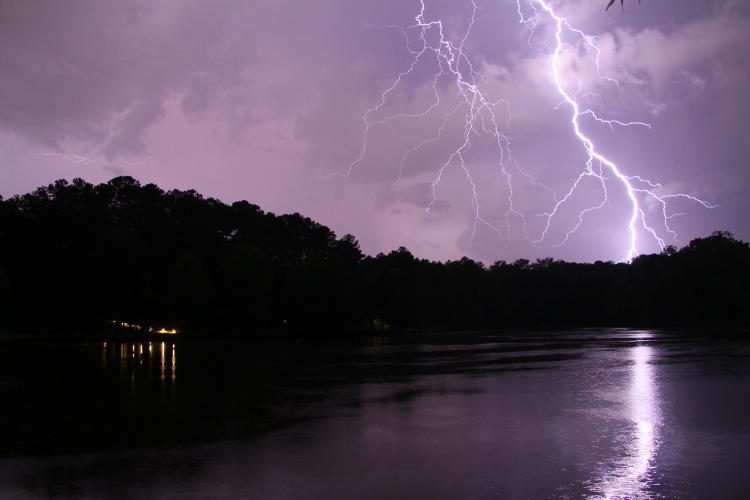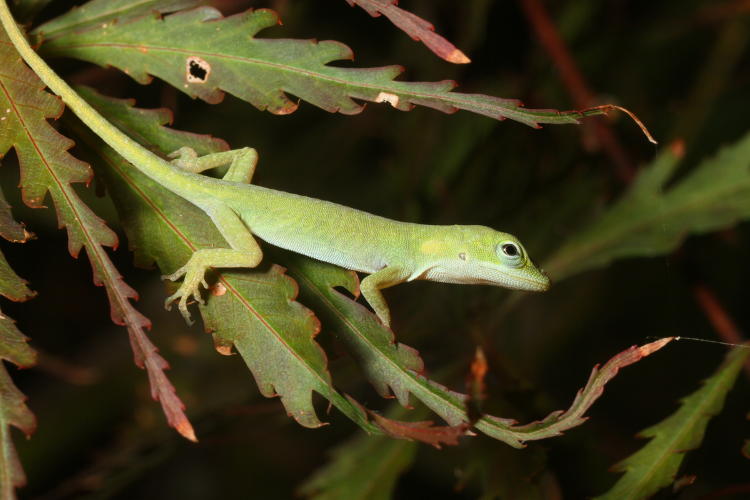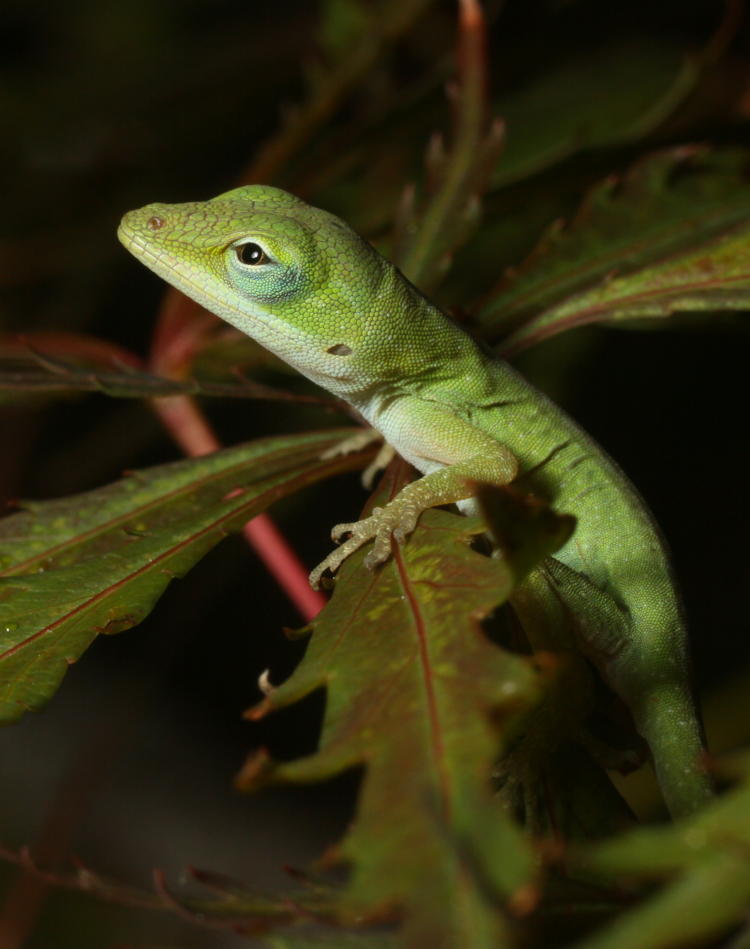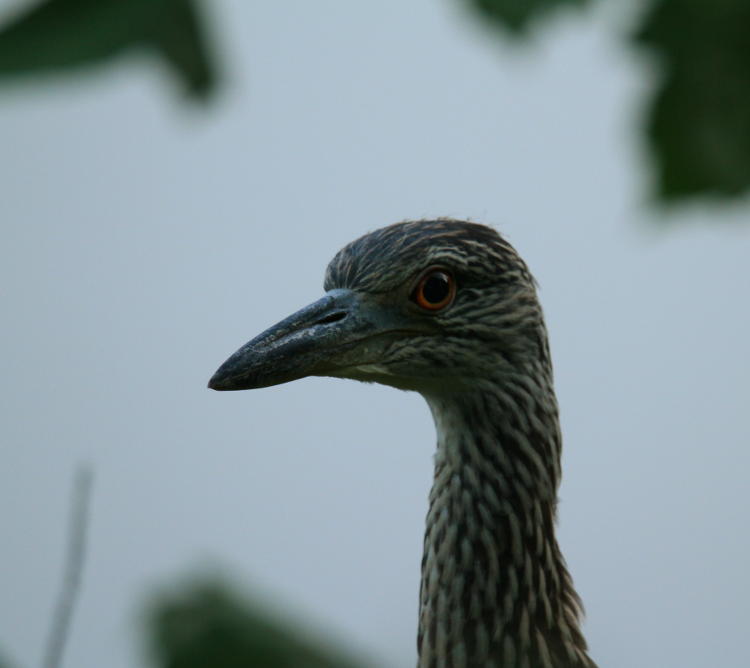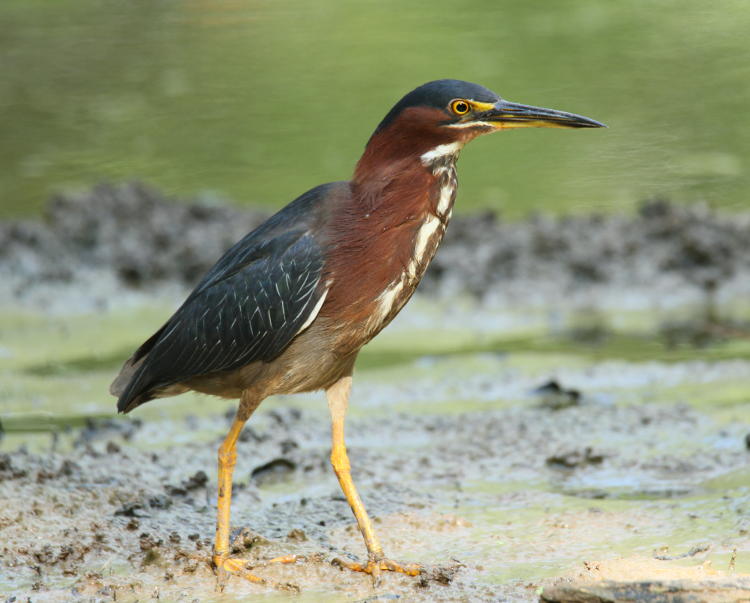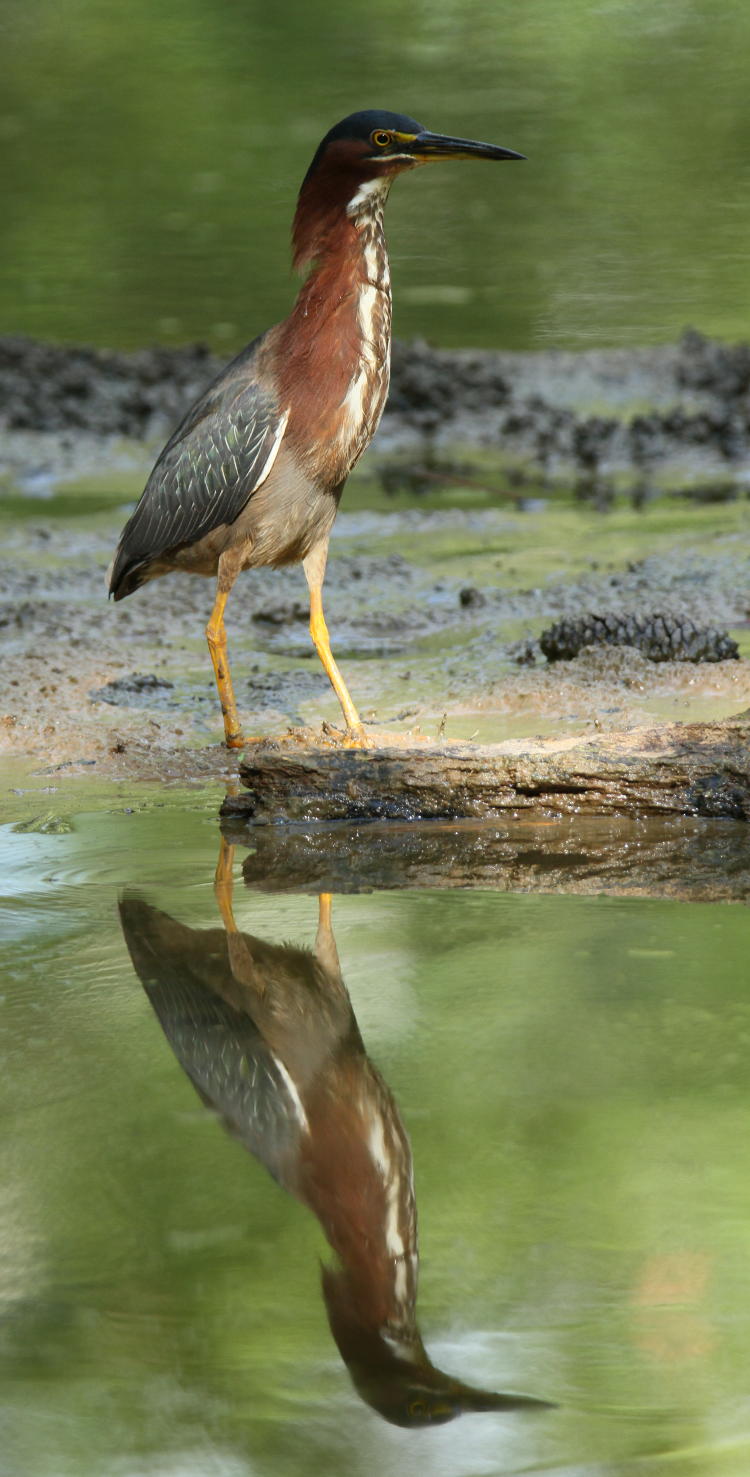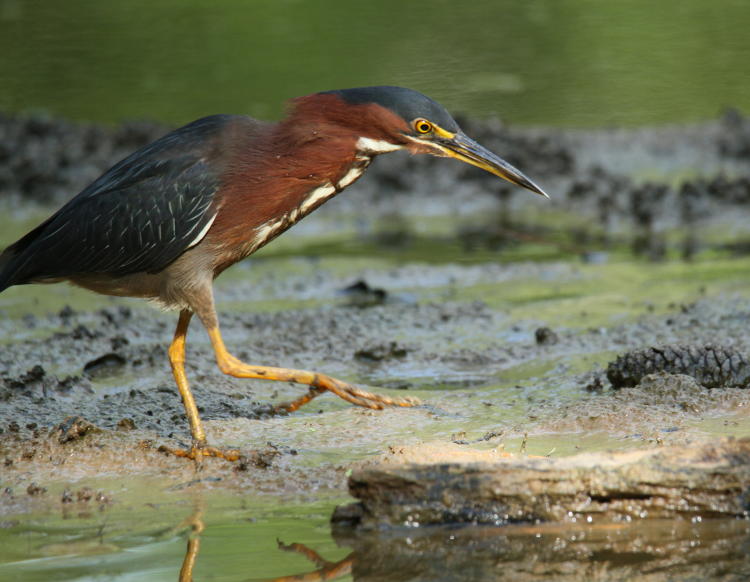Well, there is a mother and babies involved, but in exactly what way, I cannot determine – no matter which, it’s definitely creepy to our human perspective.
Out the other night by the neighborhood pond with a headlamp, tracking down a calling frog, I found a black shape on the trunk of a tree that, on close inspection, turned out to be a very large spider.
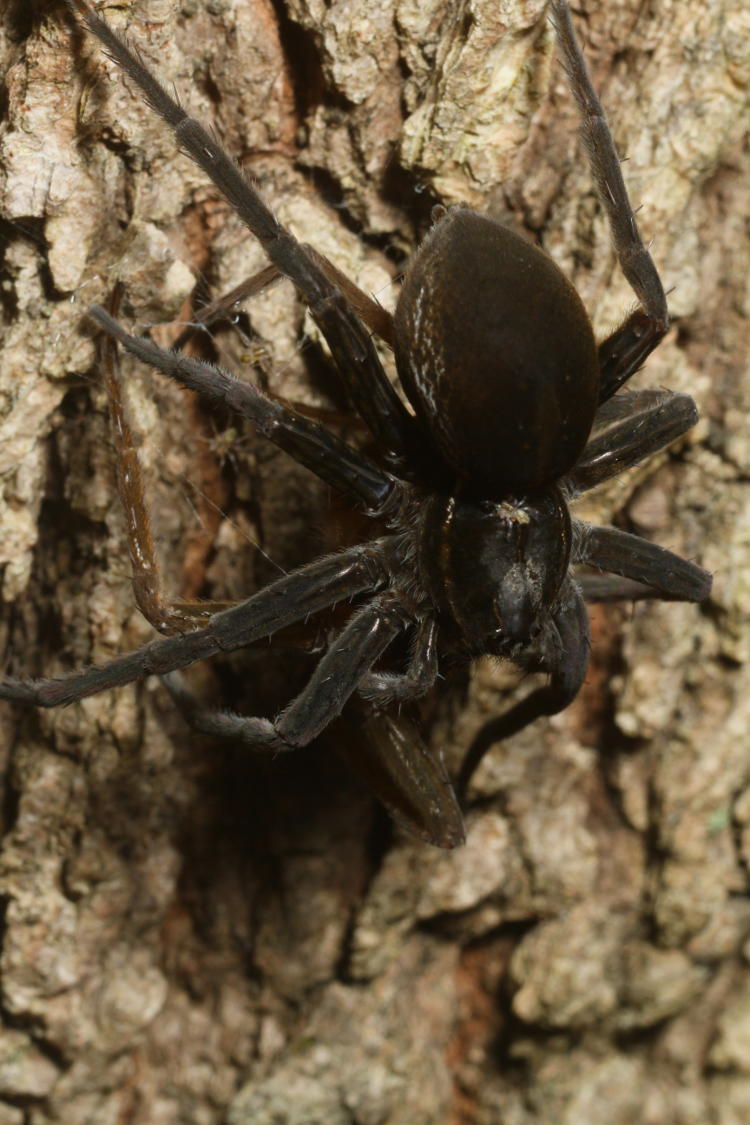
It wasn’t until careful examination of the abdominal markings that I determined that this was a six-spotted fishing spider (Dolomedes triton,) since I’ve never seen one this dark – usually, they’re olive green to rust brown in color. And this wasn’t the biggest that I’ve seen either, though it was still impressive, probably about 30mm in body length. I didn’t have to look all that close to determine that it was working on a meal; details were lacking due to the advanced nature of the consumption, but it looked to be another fishing spider.

I did several angles, during which the spider twitched slightly but remained otherwise motionless, and I then pursued other subjects. Returning home and unloading the images revealed a few tiny details that prompted me to go back out and and do some more photos; right now, we’ll refer back to the first image and the details that I saw then, shown now in an inset.
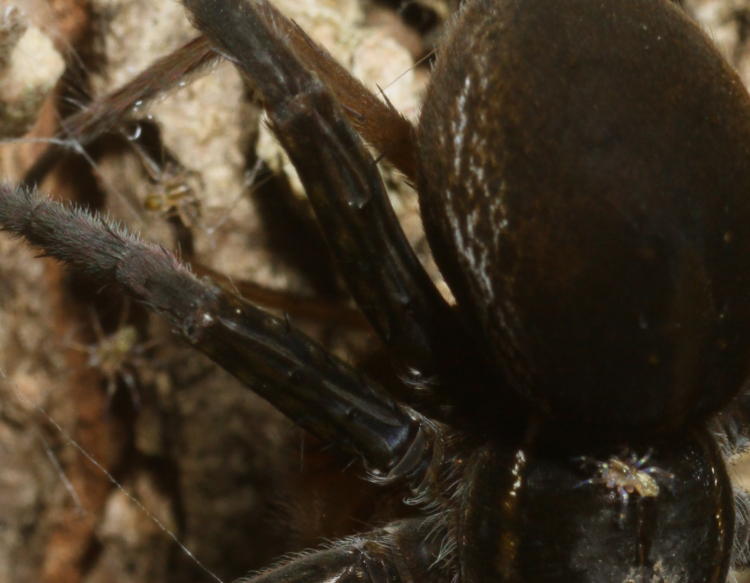
To the lower right, at the base of the spider’s cephalothorax, can be seen another tiny spider, undoubtedly a newborn, while to the left, two more can be seen on the trunk (above and below the middle leg.)
Now, I know females of the wolf spider family will carry their newborns on their back, both as protection and to introduce them to captured meals; the mother will open up the exoskeleton of the prey to allow the young access to the juicy bits. I was not aware that fishing spiders did this, certainly never having seen any despite finding lots of fishing spiders, including a nursery of newborns. But I’m not an entomologist, or any kind of collije edumacated, so it’s possible that I was simply unaware of more species doing this. When I went back out, I was hoping to find evidence of the newborns actually feeding on the captured prey, trusting the flash unit to reveal more in the shadows than I could see myself while there. Nothing was forthcoming, but I did get some slightly better pics of the little one on her back.
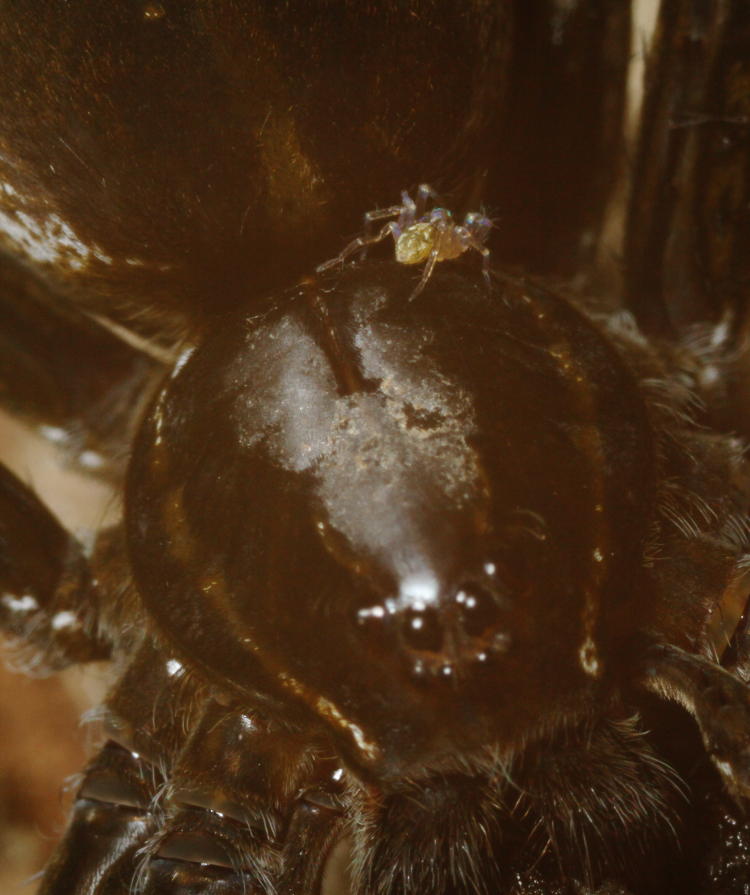
The bebby also seemed aware of me as I leaned in close, and moved away from a direct line of sight. But now, as I provide another photo, I also provide a thought that occurred to me as I was looking at them.
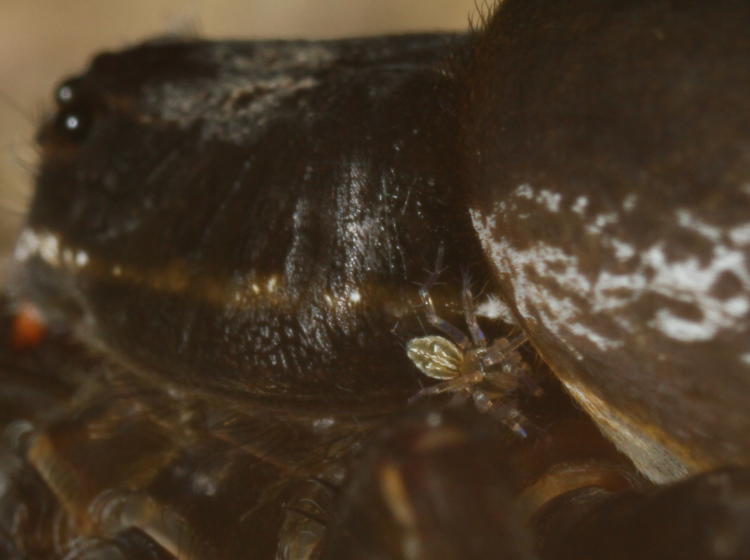
It remains possible that the fishing spiders do not carry their young around nor lead them to meals, and that I misidentified the prey. You see, that’s an awful swollen abdomen for a mother fishing spider, more like one that’s about to lay eggs, so it doesn’t see to fit with a proud mother. The only details that I can see for sure on the prey are the legs, and wolf spider legs can look similar. So it’s possible that what we’re seeing here are the newborns that had been on a wolf spider’s back, until it fell prey to the fishing spider. Most dispersed, a few were hiding out on the trunk, and this little bebby got confused. I’ll let you think about that one.























































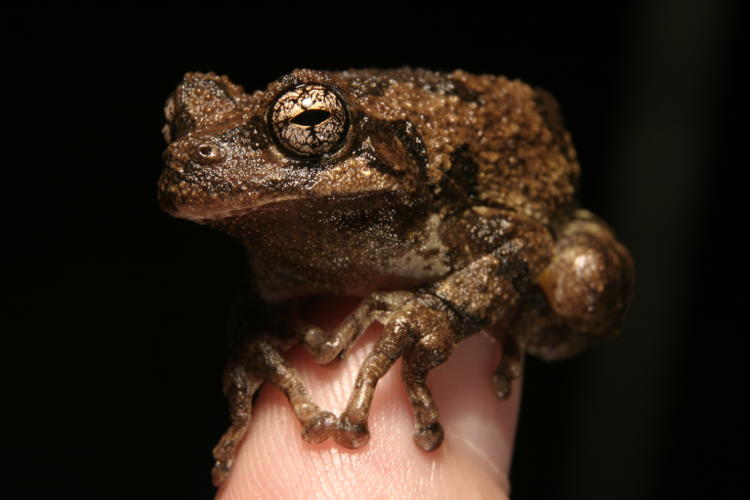
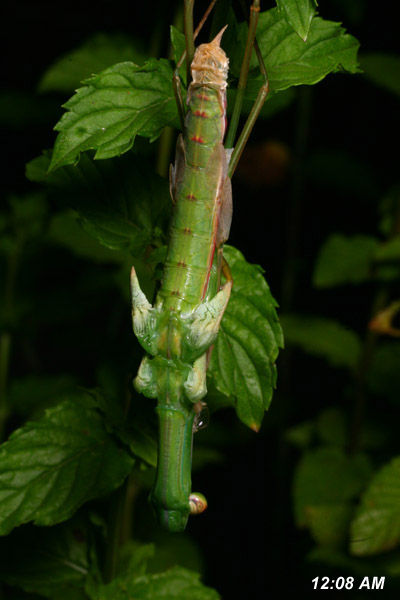 In 2015, I was out on this date doing a
In 2015, I was out on this date doing a 
